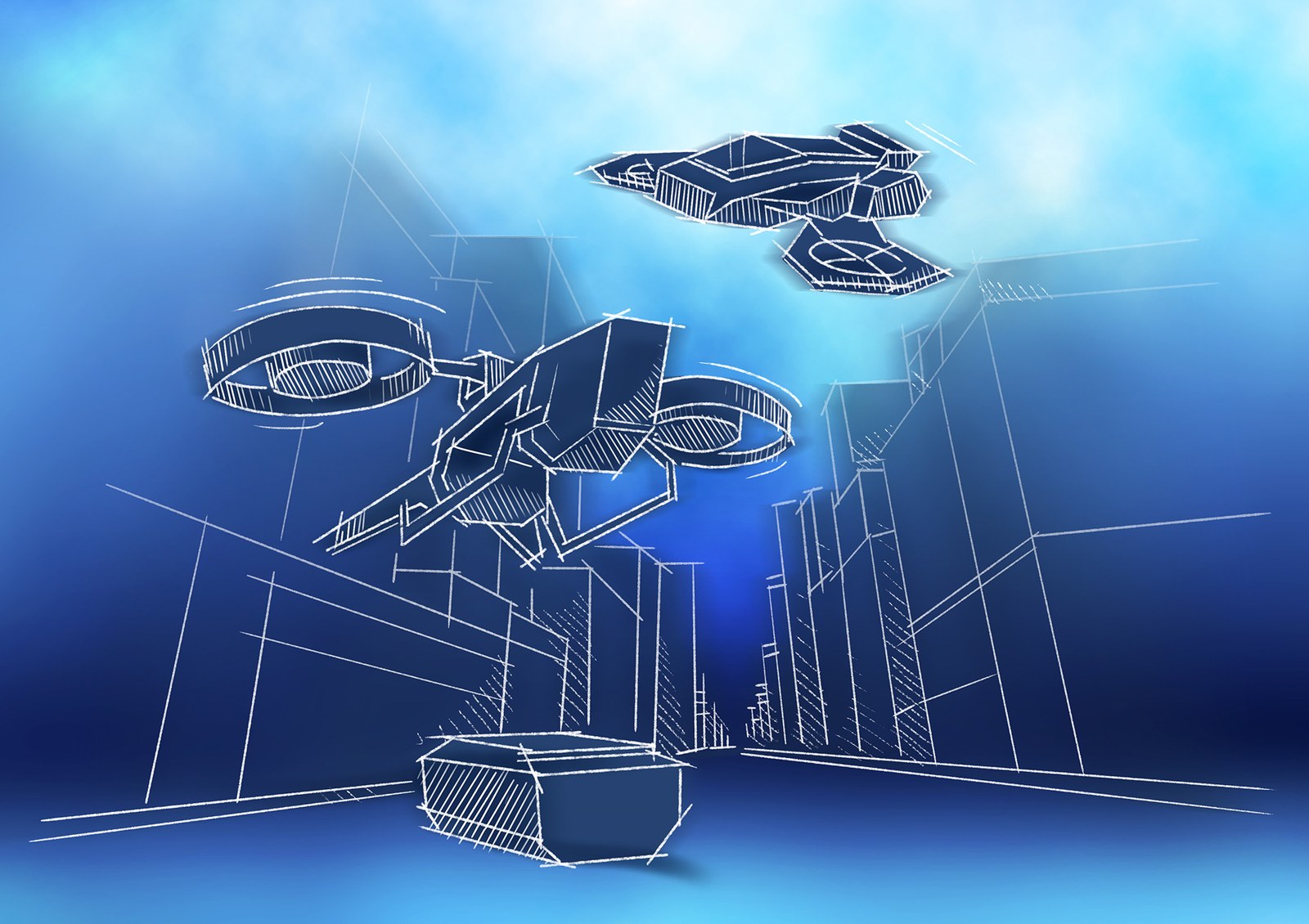The Urban Air Mobility

Outlook:
Cargo and passenger aircraft will be used cost-effectively without pilots and with safe on-board autonomy.
Requirement: Forward-looking vision – autonomous air transport
Whether in urban or sparsely populated areas, new and highly automated types of aircraft are set to play an ever-increasing role in global passenger and cargo transport over the coming decades. The first applications are already being planned, including supplying urgently needed goods such as medicines, or providing disaster relief to poorly connected regions. The next step will be the comprehensive exchange of urgently required replacement and production parts between industrial locations. The first prototype aircraft are already providing insights into the urban air mobility of tomorrow. DLR is making its contribution towards harnessing the full potential of unmanned civilian air transport and helping to increase the acceptance of such systems among both users and society as a whole.
Sound reasons that resonate with passengers
Highly automated air transport promises lower costs coupled with higher reliability. Relevant studies envisage very high growth potential in the field of urban air mobility. While the initial prototypes for such urban passenger transporters will still be flown by pilots, this is likely to prove infeasible in the long term due to the expected growth rates and the shortage of pilots worldwide. In addition, many new electric and hybrid-electric aircraft will only reach their full performance potential if their payload capacity is exploited to the full by doing without the pilot. Autonomous flight will only become a reality if it is considered sufficiently safe and reliable among users and the population at large.
Objective: Increasing autonomy and ensuring safety
DLR will research and demonstrate methods to increase the autonomy of unmanned aerial systems. Although they may carry passengers, all pilotless aircraft are classed as unmanned. The ultimate aim is the autonomous operation of aircraft that no longer require a pilot on the ground. This means that safety-critical decisions are made autonomously by the aircraft’s on-board computers. The current draft EASA regulations expressly permit such autonomous flight operation. The challenge is to establish and ensure equivalent security for autonomous operations. This requires dedicated research into system architecture and certification procedures.
Fast communication with optimum cybersecurity
Communications and navigation are key technologies for autonomous aircraft systems, as these require an especially robust data connection between the ground station and the aircraft, not least to ensure the reliable transmission of the exact aircraft location. Communications and navigation systems must always provide accurate and cybersecure information to the flight control system. The selected technologies will be tested for this purpose using DLR research aircraft. In addition to the further development of the world’s first harmonised regulations and concepts, the classification of UAS within controlled civilian airspace also needs to be investigated using new automated flight security services such as U-Space or UTM. All of this will be done in close conjunction with Guiding Concept 3 ‘Efficient air transport’.
The role of humans as a success factor
Issues relating to individual and societal acceptance are becoming increasingly important as the first prototypes of autonomous flight services start to be implemented. Human factors such as passenger comfort and perceived safety, as well as the impact of noise within urban environments, will also be investigated. The findings from such parallel research projects are also expected to enable well-founded statements to be made about areas such as the compatibility of flight manoeuvres and vibration tolerance. This will be accompanied by the determination of the minimum health and medical requirements to be met by passengers.
Autonomous flight within the overall system
Due to the expected growth of unmanned air transport, DLR is putting particular emphasis on developing new technologies for autonomous aircraft and resolving issues relating to the overall system. It is also important to determine the markets in which such aircraft systems offer time or cost savings when compared with conventional solutions and can be operated cost-effectively. This needs to apply even if the law does not permit pilotless flight – whether on board or on the ground – in the medium term, or if the technical infrastructure on the ground is set to remain unchanged for the time being. Matters relating to infrastructure are particularly pertinent to research into urban air taxis or airborne logistics services.
Enormous benefits – also for pilots
Devising operational and technical solutions for autonomous aircraft can also offer huge advantages for pilot-assisted flight, including in the form of support systems for a one-person flight deck.
